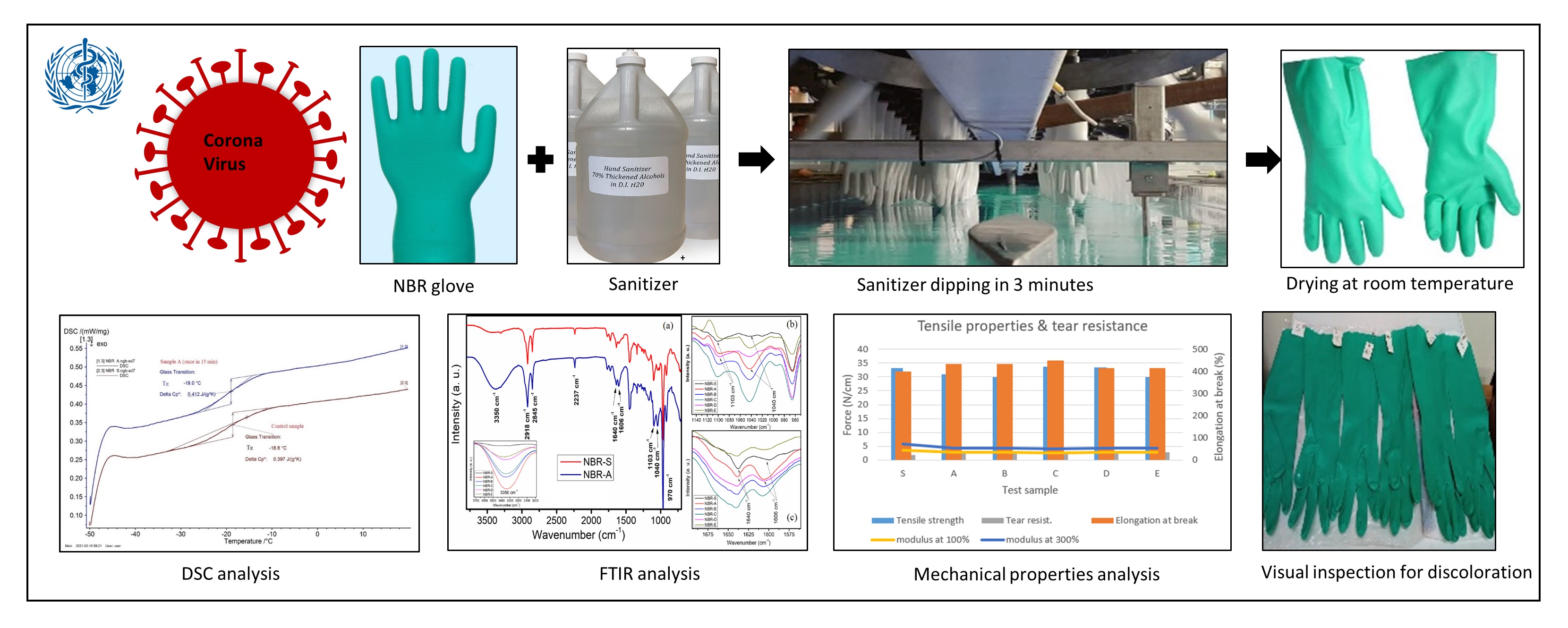The Effect of Hydrogen Peroxide based Hand Sanitizing Chemicals on the Physicomechanical Properties of the NBR Gloves
Abstract
During the Covid-19 pandemic, according to the guidelines given by the World Health Organization (WHO), all industrial and examination gloves are subjected to disinfection globally using hand sanitizers. This may affect the physicomechanical properties of the gloves. However, limited data are available regarding the aforesaid issue. This research is focused on investigating the effect of hydrogen peroxide-based hand sanitizer formulations, recommended by WHO on the chemical and physicomechanical properties of NBR gloves. NBR gloves were exposed to sanitizing chemicals with different application frequencies for eight hours and the properties were evaluated after 48 hours. The results revealed that there is no significant effect of sanitizer formulation on the mechanical properties of NBR gloves such as tensile strength, tear resistance, elongation at break, modulus at 100%, and 300% even at high frequent applications. Physical properties such as discoloration, swelling, and leakages were also not affected by the application of sanitizers. Further, DSC and TGA test results revealed that there is no significant change in crystallinity and thermal properties between control and test samples. However, FT-IR analysis indicated a change in the chemical environment of the surface of the glove specimens. Since FT-IR is a surface analysis technique, it can be identified as the surface of the gloves has been affected by the exposure to sanitizer formulations. Nevertheless, the inadequate time for the hand sanitizing chemicals to be penetrated to the core of the gloves might result in unchanged physicomechanical properties within 48 hours. Knowing the fact that the examination gloves have a very short usage time, it can be concluded that the effect of hydrogen peroxide-based hand sanitizer formulations on NBR examination gloves is negligible. However, we highlight the importance of conducting further research for an extended period to evaluate the effect of the exposure on heavy-duty NBR gloves such as industrial gloves.

Downloads
Published
How to Cite
License
Copyright (c) 2022 Aradhana Nilmini, Shirani Priyanka, Renuka Nilmini, Susantha Siriwardene, Gayan Priyadarshana

This work is licensed under a Creative Commons Attribution-NonCommercial-NoDerivatives 4.0 International License.
The Authors hold the copyright of their manuscripts, and all articles are circulated under the terms of the Creative Commons Attribution License, which permits unrestricted use, distribution, and reproduction in any medium, as long as that the original work is properly cited.
The use of general descriptive names, trade names, trademarks, and so forth in this publication, even if not specifically identified, does not imply that these names are not protected by the relevant laws and regulations. The authors are responsible for securing any permissions needed for the reuse of copyrighted materials included in the manuscript.




